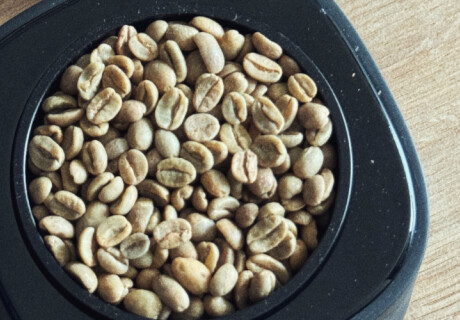The Importance of Water Activity in Preserving Green Coffee Quality

Green coffee is the foundation of every cup we drink, and preserving its quality is crucial to the flavor, aroma, and consistency of the final product. One of the most critical factors that affects green coffee quality during storage is water activity (aw) – the amount of free moisture inside the beans.
Water activity is not just the total moisture content, but the available moisture that can influence chemical, microbial, and physical changes during storage.
What is Water Activity (aw)?
Water activity (aw) refers to the energy status of water in a system and is related to the product’s ability to support microbial growth and chemical reactions. In green coffee, aw is measured by equilibrating the sample’s moisture with the air in a closed chamber and recording the equilibrium relative humidity (ERH).
Measurement can be done using sensors such as:
– Resistive electrolytic sensors – highly accurate and stable.
– Chilled mirror sensors – may be affected by contaminants.
– Capacitive hygroscopic polymer sensors – absorb moisture to measure aw.
These technologies allow for precise monitoring and help ensure aw remains within optimal storage levels.
How Water Activity Affects Coffee Quality
Although aw is not directly linked to a coffee’s cupping score, it significantly affects storage and transport stability. The ideal aw range for maintaining green coffee quality is between 0.45 and 0.55.
Outside this range, problems may arise:
– Microbial growth above 0.55 aw.
– Increased rate of chemical reactions affecting taste.
– Loss of metabolic stability below 0.45 aw.
Water Activity and Microbial Safety
One of the main reasons 0.55 aw is the upper limit for green coffee storage is to prevent microbial growth:
– Most bacteria stop growing below 0.87 aw.
– Yeasts and molds struggle below 0.70 aw.
– Below 0.55 aw, microbial growth is effectively halted, preventing spoilage and mycotoxin production.
Mycotoxins from mold can seriously affect flavor (moldy, earthy, musty) and pose health risks.
Water Activity and Chemical Stability
Water activity also influences key chemical reactions:
– Maillard reactions (impacting color and flavor)
– Lipid oxidation (causing rancidity)
– Staling (leading to flat taste profiles)
Storing coffee below 0.55 aw slows these reactions, extending shelf life.
Water Activity and Metabolic Stability
A level below 0.45 aw may harm green coffee freshness:
– Off-flavors like cardboard or woody notes can develop.
– Beans may become hard and brittle, reducing roast and brew performance.
Keeping aw between 0.45 and 0.55 preserves green coffee’s quality for 8–10 months.
Conclusion: Water Activity as a Key to Quality
Proper control of water activity is vital for ensuring green coffee quality. Maintaining aw in the ideal range of 0.45–0.55 helps prevent microbial and chemical degradation, preserves freshness, and protects the unique sensory profile.
Producers, importers, and roasters must consider aw throughout the supply chain, applying proper storage, transport, and quality control practices. With careful water activity management, a premium crop can reach the consumer exactly as intended.
